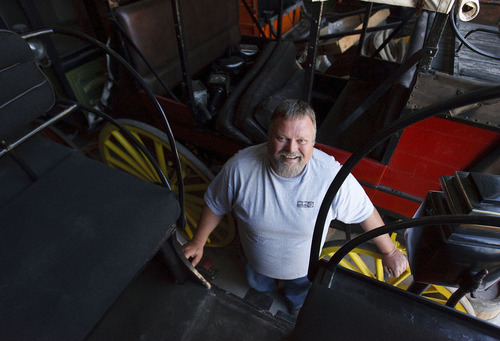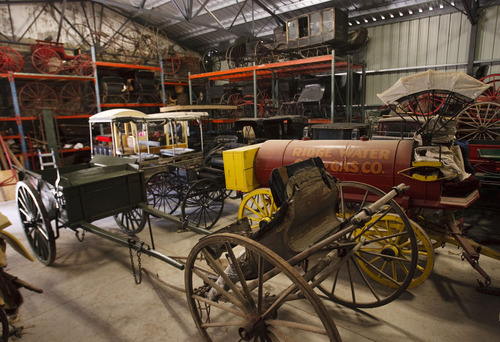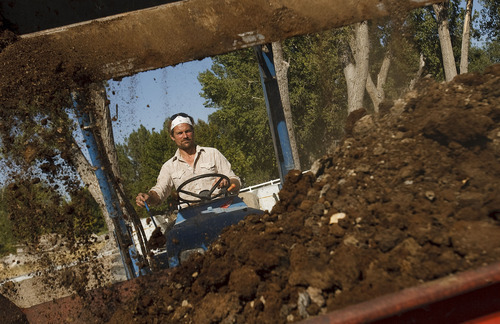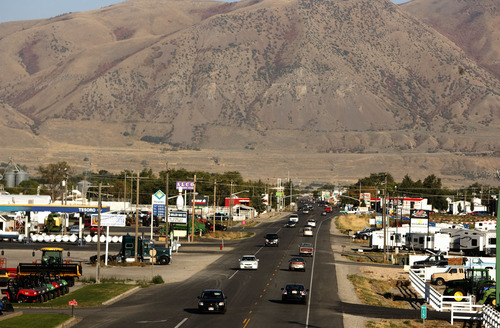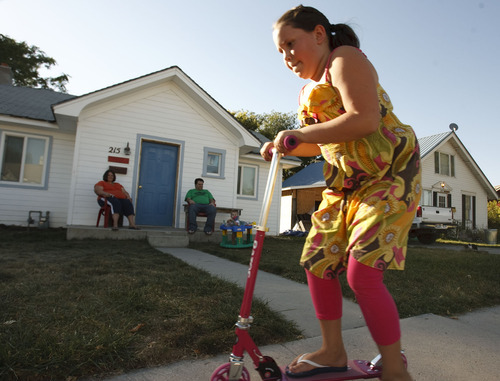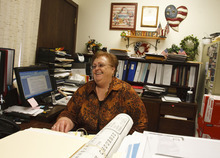This is an archived article that was published on sltrib.com in 2010, and information in the article may be outdated. It is provided only for personal research purposes and may not be reprinted.
Tremonton • This northern Utah town of 7,000 celebrates its contradictions and differences.
Agriculture is so important here that a canal system that is more than 100 years old runs right through the middle of town. A huge county fairground that boasts Utah's oldest rodeo dominates the west end of Main Street.
Yet for most, farming only supplements income from big-industry jobs at factories like Malt-O-Meal cereals, West Liberty foods, Autoliv airbags, ATK rocket motors, Procter & Gamble and Munns Manufacturing that surround the town like sentinels. Few small towns in Utah boast this kind of industrial clout.
"Tremonton is an agricultural community," said Eli Anderson, a fourth-generation resident and former state legislator who owns one of the world's largest collections of horse-drawn wagons. "There are a lot of second jobs. People work at ATK, Malt-O-Meal or someplace else to support the farm."
The farming tradition reflects itself in many ways. Though being situated on a train line and between two freeways helps the town support its heavy industry, residents cling to agriculture.
Some enjoy the times when the Holmgren Historic Farm's iconic oval barn hosts an evening dance. On the town's back roads, it is possible to savor the smells of cut hay and tilled, fertile soil on a late fall afternoon. They sometimes mix with the sweet-smelling cereal flavors coming out of the Malt-O-Meal stacks, emphasizing Tremonton's split personality.
The work ethic found on a farm can prove inviting for out-of-state companies looking for a place to relocate.
"We opened the plant in December of 2003," said Mark Suchan, manager of the 381,000-square-foot Malt-O-Meal factory that employs 260 and makes 11 types of cereal. "Being an agricultural area provides us with a work force that has a great value system. The work ethic is really strong. Being away from the city, we also avoid air-quality issues for a manufacturing environment that we would find in Salt Lake."
There is also a toughness in the residents who stay here despite layoffs at ATK, the shutting down of the iconic U&I Sugar Plant in 1979 and the 2008 closing of a La-Z-Boy chair manufacturing plant that employed 660. Those jobs were shipped to Mexico. The plant sits idle these days, its gates locked and weeds growing in the parking lot. No buyers seem interested in reviving it.
"It's tough," said Max Weese, who was the town's mayor from 1993 to 2010. "You have to grab hold, hang on and do the best you can. When those big industries decide that's what they are going to do, there is no changing their minds."
These days, Tremonton is predominantly Mormon. But it wasn't always like that. Just look at the town's Main Street. It is narrower than most Utah main drags where LDS planners favored wider roads.
There is a reason for this.
This was one of the rare Utah communities not settled by Mormons. Instead, the town's first residents were German Midwestern farmers, many from Tremont, Ill., who came west looking for fertile ground and found it here.
Tremonton enjoys great ethnic and religious diversity, another thing that makes it different. It's no accident that the town is home to three Mexican, a Vietnamese and a Chinese restaurant as well as at least seven religious denominations. Many immigrants came here to work on farms and ended up making the town home.
"We still have a significant Hispanic population," said Utah State extension agent Lyle Holmgren, whose grandfather established a farm in the town in 1916, buying it from one of the original homesteaders. "They are more settled and not so migratory as they once were. We rely heavily on them. They have become part of the community and have gotten involved in city government. They are a good part of our community that make a big difference."
Tremonton's city government does things differently as well. For example, city manager Shawn Warnke said the town operates one of the state's only municipal food pantries and needy folks from all over northern Box Elder County, even those who are not town residents, use the service.
Of course, it helps that local companies contribute to the effort. Malt-O-Meal, for example, keeps the pantry stocked with cereal. The company also donates 15,000 bags of cereal to the town's United Way drive's "Buck a Bag" program, where residents buy a bag of cereal with all proceeds going to charity.
For most, though, Tremonton remains just a name on a freeway exit, a place to get gas when coming or going between Salt Lake City, Idaho and perhaps Yellowstone or the Pacific Northwest. It's only when a traveler takes the time to drive down well-kept Main Street, attend Utah's largest county fair, enjoy a great Mexican meal or drive the back roads where farmers still work the fields that they fully realize Tremonton is a different kind of place.
Tremonton history
The town of about 7,000 residents in the Bear River Valley was originally settled by non-Mormon Midwestern farmers, some from Nebraska, others from Iowa and a German colony from Tremont, Ill., in the late 1800s and early 1900s. One story says the Germans gave the town its name of Tremonton while others say it was named because of three mountains nearby. According to Kleon Kerr, of the Utah History Encyclopedia, the town was named Tremont but that caused too much confusion with the Utah town of Fremont, so the problem was solved by adding two letters. The town, at an elevation of 4,322 feet, was formally organized in 1906. —
Wagons ho!
Eli Anderson, a fourth-generation resident who lives on Salt Creek near Point Lookout on the west end of town, remembers visiting the old Pioneer Village in Salt Lake County as a third-grader and seeing pump organs, a cream separator and other things his mother grew up with. He found many of the old historical antiques were tossed. Thus began a lifelong obsession with collecting horse-drawn wagons and buggies. He used $500 out of his life savings in high school to buy his first buggy, which he restored. The collection has grown to 250, including a horse ambulance, beverage wagon, fire wagon, sleighs and a rare U.S. Mail wagon.


